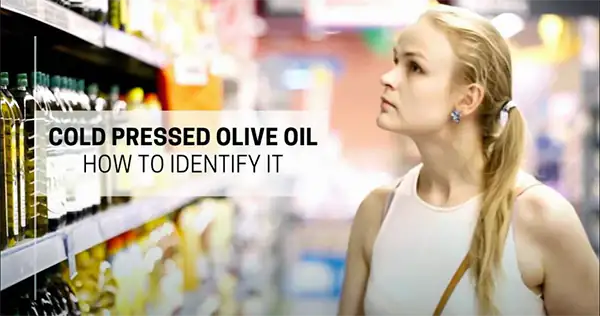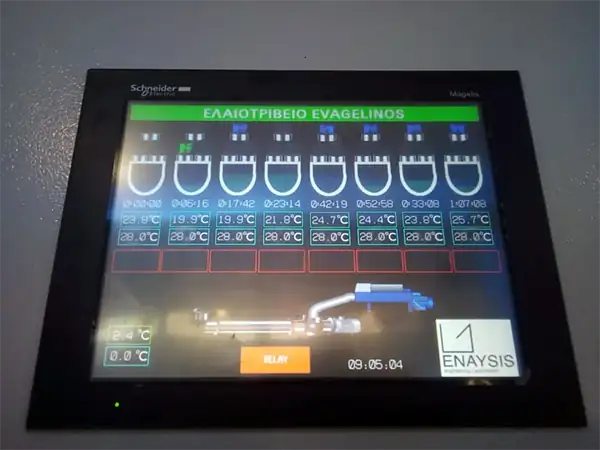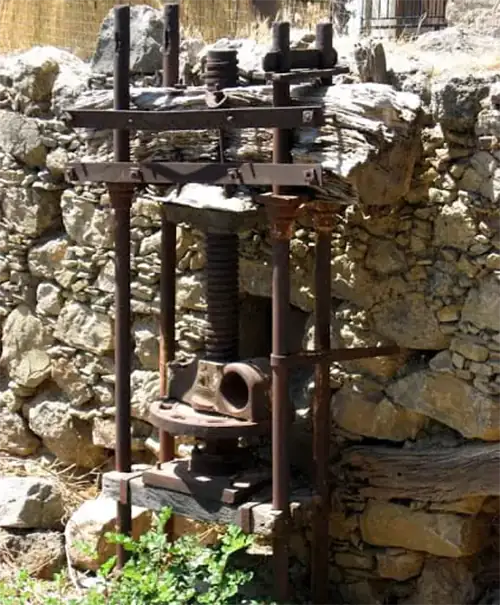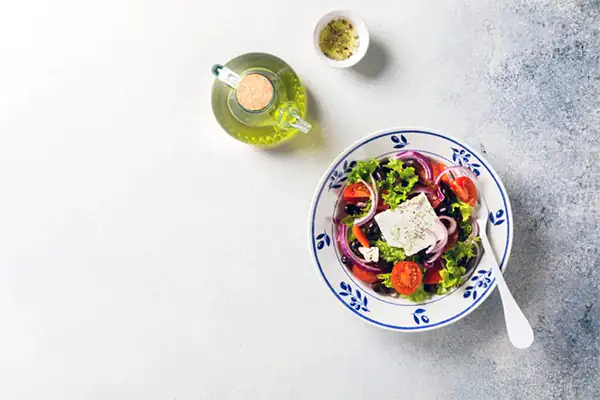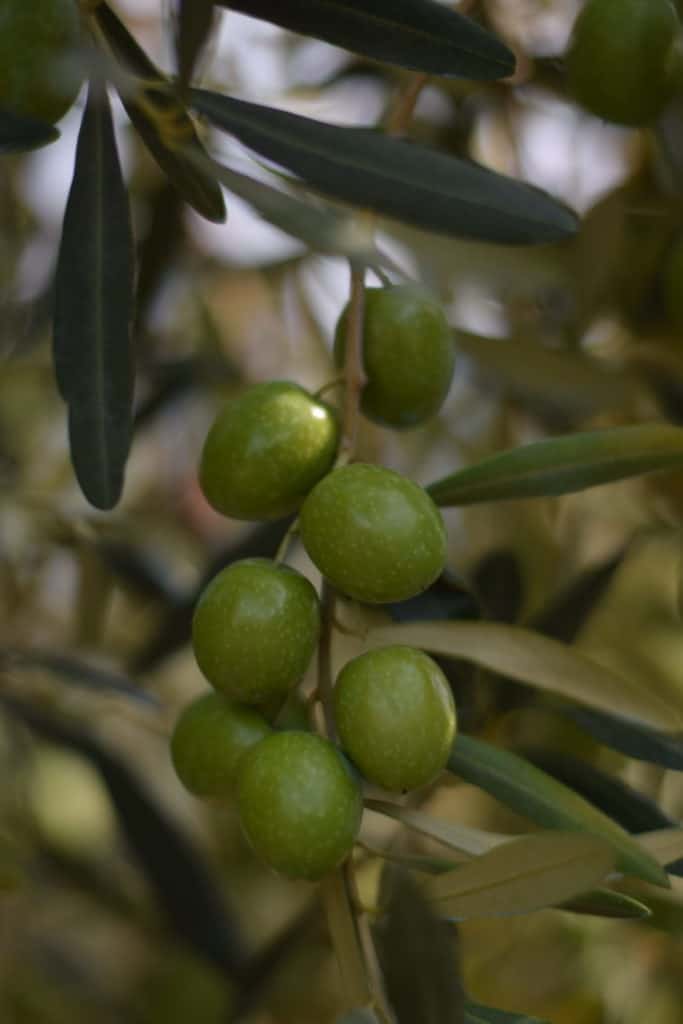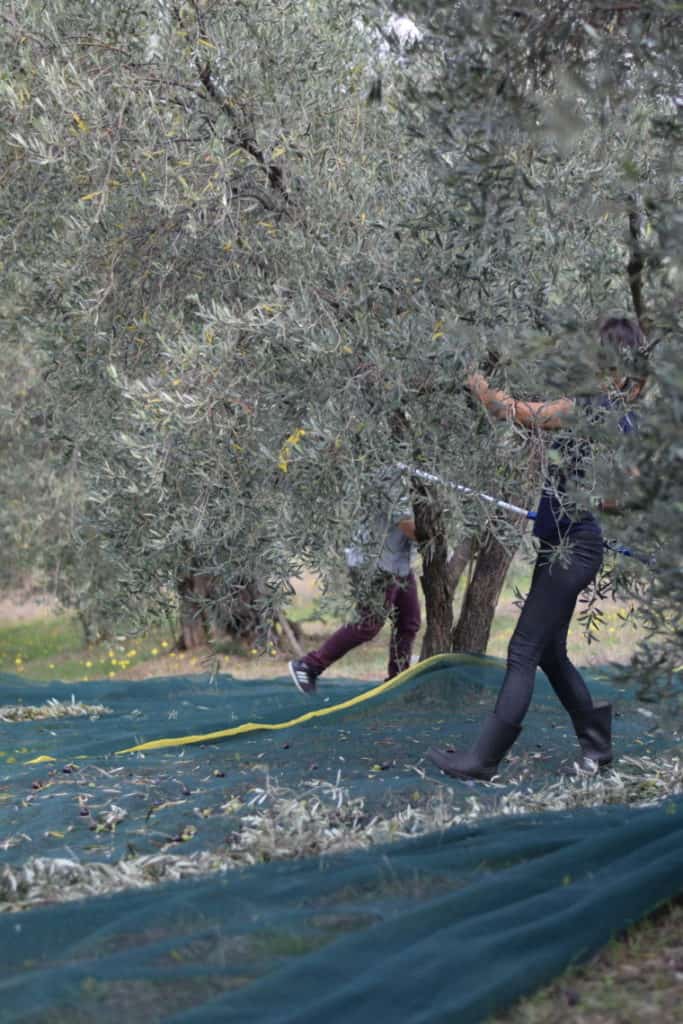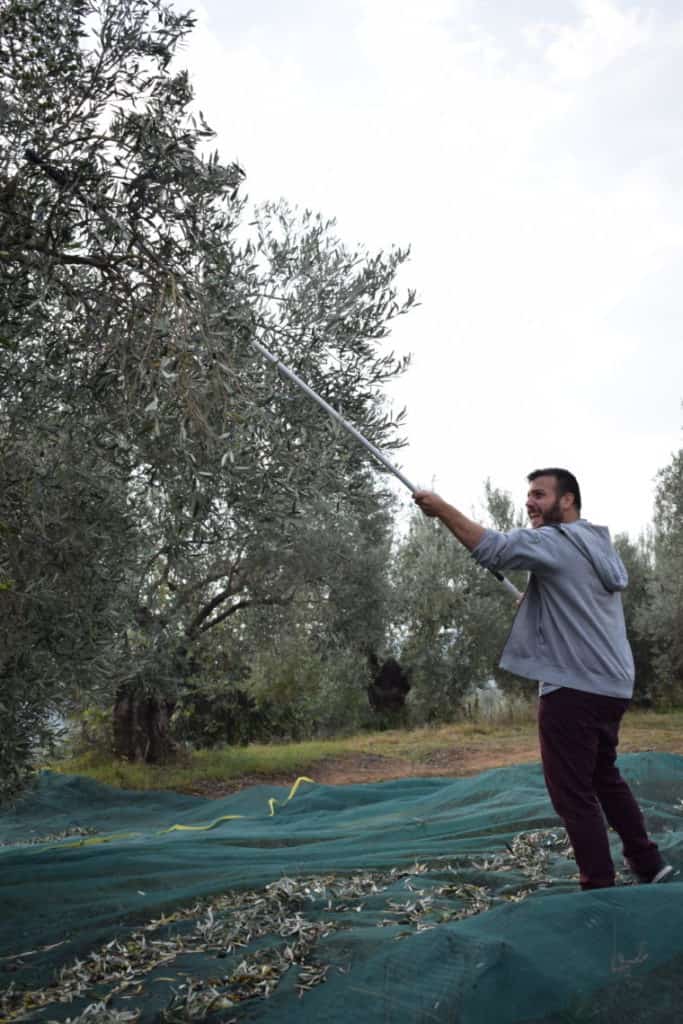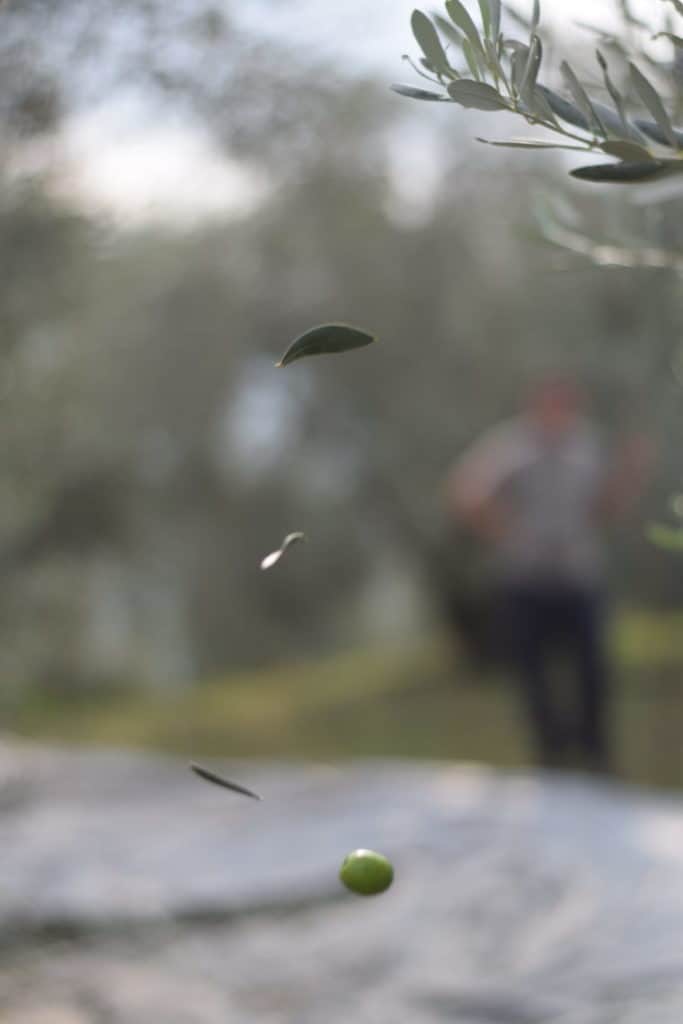Cold Pressed Olive Oil: How To Identify It
Written by: Athanasios Demeslis, Producer of Myrolion
Last Update: April 5th 2023
Read Time: 8′
Cold pressed olive oil is full of luscious aromas and benefits for our health.
However, regulation around this term is quite limited, so it is possible to be used to mislead consumers.
Thankfully, there is a way to make sure that an olive oil is actually cold pressed.
Lazy? Quick Read.
Key Takeaways on Cold Pressed Olive Oil
1. Cold pressed olive oil is the type of olive oil that is extracted below 27°C.
2. This allows more polyphenols and aromas to be preserved.
3. As a result, cold pressed olive oil usually has a superior taste and greater health benefits.
4. Extra virgin olive oil (EVOO) can either be cold pressed or not. Actually, most EVOOs are not cold pressed.
5.There is no sufficient regulation around this term. It is common for the term to be used without context, essentially misleading consumers.
6. The only way to make sure an EVOO is cold pressed indeed, is to check the phenolic profile. It is common for cold pressed olive oils to have higher polyphenol content and thus bear a health claim according to EU Regulation 432/2012.
7. The only two differences between EVOO and CP-EVOO are the higher amounts of polyphenols (natural antioxidants) and volatile compounds (aromas/flavor). Both types of EVOO have the same types and amounts of fats.
8. When buying cold pressed EVOO make sure it is early-harvest, packaged in dark containers, and that your supplier has stored it with care.
9. You can cook with cold pressed EVOO.
10. As a consumer, you should always ask for a polyphenol analysis to make sure the EVOO is cold pressed.
What is Cold Pressed EVOO?
In the broad sense, Cold-Pressed Olive Oil is the type of olive oil that has not been thermally modified to the point its sensory and chemical features have been negatively altered.
Olive oil has a specific physical-chemical set of properties. These properties give olive oil a plethora of health benefits. However, there are numerous factors during the extraction process that can strip olive oil off of its healthy properties, by slightly or heavily altering this specific physical-chemical structure.
One of these quality factors is the extraction temperature. For example, the structure and thus properties of the olive oil will be different if it is extracted on 40 degrees Celsius, instead of 30 degrees Celsius.
Specifically, olive oil’s phenolic compounds and other volatile compounds that contribute to the oil’s aromas can be destroyed.
So, why do some producers prefer to extract olive oil in high temperatures? Because a higher extraction temperature can increase olive oil yield.
Overall, it is safe to say that cold pressed EVOO is the olive oil that has been extracted below 27 degrees Celsius.
It is important to note that a small variation of the extraction temperature doesn’t affect the structure of healthy fats in olive oil.
However, a prolonged exposure to increased temperatures and oxygen can lead to the creation of free radicals and an increase in acidity.
This means that an EVOO that was extracted in 31 degrees Celsius will still have the same amounts of polyunsaturated fatty acids, like oleic acid, etc.
Also, it will still not be high in saturated fat. Low extraction temperatures typically offer higher quality, freshness and robust flavour thanks to the higher polyphenol concentrations that are preserved.
Why is Cold Pressed Olive Oil Better?
This type of olive oil simply contains larger amounts of polyphenols, olive oil’s natural antioxidants, which in turn provide greater health benefits for you.
Additionally, cold pressed extra virgin olive oil provides a rich and delicate flavor, thanks to the high phenolic content.
What are the Health Benefits of Cold Pressed Olive Oil?
Cold pressed olive oil is packed with polyphenols, which are powerful antioxidants that can help reduce inflammation and lower the risk of chronic diseases. In fact, studies have shown that consuming olive oil regularly can improve heart health, aid weight loss, and even reduce the risk of cancer. Its anti-inflammatory properties reduce the risk of gut-related diseases, such as leaky gut syndrome and Crohn’s disease. Studies suggest that incorporating this liquid gold into your diet can lead to lower rates of cognitive decline and even improve your memory.
Is Cold Pressed EVOO Better for Hair Skin and Nails?
Olive oil polyphenols have been found to treat skin damage, particularly;
– Contact Dermatitis
– Atopic Dermatitis
– Eczema
– Xerosis
– Psoriasis
– Rosacea, etc.
However, it is important to note that the topical application of cold extracted EVOO on skin, has not been thoroughly studied. It is possible for olive oil to irritate dry skin, especially to children with skin sensitivity.
Olive oil has been continuously used since ancient times as a skin moisturizer, for hair treatment, etc. However, we advise to play it safe and use high quality products in moderation.
Are all Extra Virgin Olive Oils Cold Pressed?
No, it is possible for extra virgin olive oil to be extracted above 27°C.
This means it is not cold pressed but it still maintains the sensory and chemical specifications that make it extra virgin. What it does not maintain is the increased concentration of polyphenols.
What is the Difference Between First Cold Pressed and Cold Pressed?
First cold pressed: Before telling you anything about it, I’d like to first make clear that this term is practically obsolete nowadays.
Way back when, the majority of olive presses where, well, presses. This means that for olive oil to be extracted from the fruit they had to be pressed by a large screw system, like the one on the picture.
Sometimes, to achieve maximum olive oil yields, olive millers would press the olives again. Back then, the olive oil that would be extracted from the first press, was perceived of higher quality and was known as first cold pressed, or first pressed olive oil.
Nowadays, the thriving majority of olive presses use malaxers and centrifugal force systems to extract and separate the olive oil. This method typically yields more olive oil of better quality, while minimizing the possibility of impurities.
In contrast to the term “first pressed” or “first cold pressed”, the term “cold pressed”, or technically “cold extracted”, is still valid and meaningful today. Because in the modern types of olive presses we use today, temperature still matters.
It is worth mentioning that today few olive presses, as known in the past, still exist and produce olive oil. Some even with modern additions.
How is Cold Pressed Olive Oil Certified?
In short, it is not. This term is largely unregulated, although not obsolete as many sources claim. Although not easily validated, which makes it fraud-friendly, it still means something.
The European Union has tried to regulate the term with EU Regulation 1019/2001.
How Do You Know if Olive Oil is Cold Pressed?
There is only one way to know if the olive oil is cold pressed; the resulting quality of the olive oil.
Specifically, if the olive oil has been certified as high phenolic then there is a high chance it was cold pressed. Do not trust just the oil’s label because there is simply no regulation there.
What is the Difference Between Cold Pressed and Cold Extracted Olive Oil?
In EU Regulation 1019/2001 it is stated that:
“- The indication ‘first cold pressing’ may appear only for virgin or extra virgin olive oils obtained at a temperature below 27 °C from a first mechanical pressing of the olive paste by a traditional extraction system using hydraulic presses.
– The indication ‘cold extraction’ may appear only for virgin or extra virgin olive oils obtained at a temperature below 27 °C by percolation or centrifugation of the olive paste.”
So cold pressed olive oil can be obtained from olive presses that employ pressing technology and cold extracted olive oil can be obtained from olive presses that use malaxation and centrifugation techniques.
If You Intend to Buy Cold Pressed Olive Oil
Buying cold pressed olive oil (certified as high phenolic olive oil), is not the same as buying an olive oil for cooking.
When buying olive oil that has been cold extracted, you pay an increased price for the higher polyphenol content that has been preserved. When you buy olive oil for cooking, you don’t.
This means that grocery stores need to treat this type of olive oil differently. In a retail environment, olive oil bottles are exposed to constant lighting which in turn increases the oil’s temperature. Both light and heat harm the oil’s phenolic profile.
So, if, for example, you buy cold pressed olive oil from your local grocery store, in August, when the oil has been exposed in this environment for months, there is a chance that the oil’s antioxidant profile might be degraded.
You should demand from your local grocery that they store this type of olive oil in dark, heat-free conditions, maybe in their warehouse, and bring it to you upon purchasing it.
If you buy your olive oil from an online store, like our family’s e-shop, then you should ask about the way they store olive oil, and why not ask for a few photos of the place the oil is stored.
Buy Olive Oil in Dark Containers
Of course, choosing cold extracted EVOO in dark containers, for example in a dark glass bottle, goes without saying.
When discussing with people, either consumers or purchasing managers of retail stores, it is not rare to hear them complain about Myrolion’s dark bottle because they cannot see the olive oil inside.
I then inform them that the oil‘s color is not indicative of its quality, while having the oil constantly exposed to light would degrade the oil way before they use it or sell it.
Harvest Date Matters
Another factor that is important when purchasing olive oil extracted below 27°C is the harvest date. While these two concepts are not directly related, it still matters.
The only reason someone would extract or consume cold pressed EVOO is the increased amount of phenolic compounds that are preserved, which offer a great aroma, fruity flavor and health benefits against heart disease and numerous other conditions.
Various studies have shown that the pool of phenolic compounds is greatly affected by the time of harvest. Specifically, the later the harvesting and extraction take place, the smaller the polyphenol pool.
As a result, it doesn’t make much sense to ask for cold-extracted EVOO if it is not early harvest. Early harvest olive oil is typically extracted from late September to early November. After this point, the olive fruit is turning dark and polyphenols decrease in quantity.
Can I Use Cold Pressed EVOO for Cooking?
We get mixed signals on this one. If you choose to do so, you will pay a higher price but your meals will have a higher nutritional value.
When you buy cold pressed olive oil you pay a higher price for the increased amount of antioxidants that were preserved. So, by heating this high quality olive oil in cooking temperatures you destroy some of these antioxidants.
As a result, you will have lower value-for-money when cooking with cold pressed EVOO, when compared to using it raw.
However, scientists say that the meal will still have a higher nutritional value thanks to the polyphenols that survive the heating.
So, you wouldn’t lose too much if you were to use it for sauteing or even deep frying. However, make sure to not cook with any type of olive oil in high heat ovens that go beyond 210°C.
So, if you cannot afford to have one great well-rounded olive oil, keep two types of olive oil for different uses;
– a high phenolic one for raw use on salad, salad dressing, marinades, dips, sauces or over already cooked meals, for example fish and vegetables meals.
– an organic, good quality olive oil for cooking. Virgin olive oil could be best if you want an oil to cook exclusively with. Make sure to check our family’s traditional recipes for ideas on how to get the most out our Greek olive oil.
Olive oil that has been cold extracted is great for following Mediterranean diet principles, where olive oil is frequently used raw. For more details see our guide on what type of olive oil is best for each use.
Is Myrolion Cold Pressed?
Our family consumes the same olive oil daily. Naturally, we want our olive oil to be rich in antioxidants and nutrients, while having exquisite smell and taste. As a result, there are specific steps we need to ensure during the production process;

